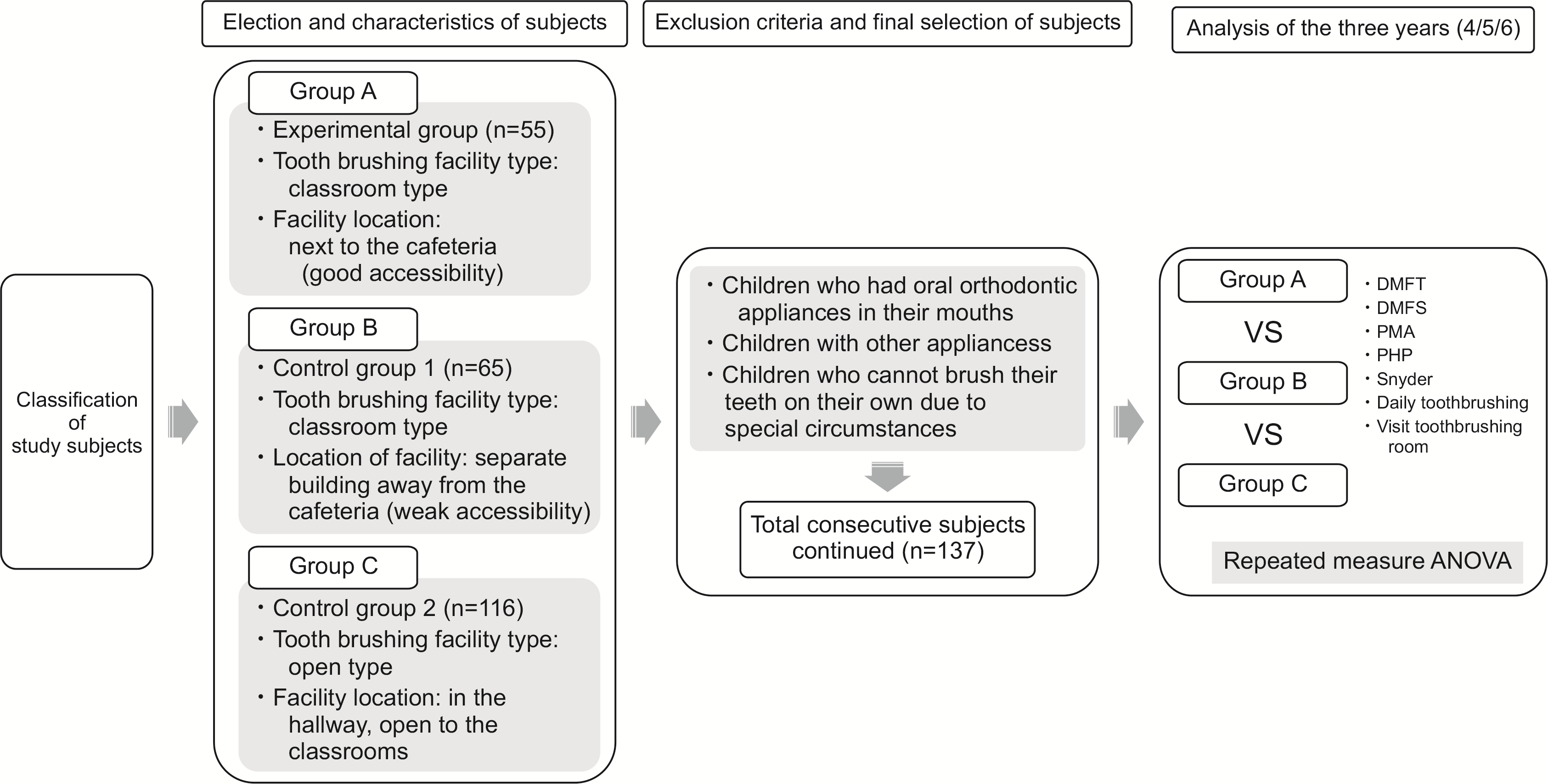1. Seo HS, Moon HS, Bak DI, Kim SB. 1992; A study on the school based comprehensive incremental programe of first permanent molars. J Korean Acad Dent Health. 16:400–428.
2. Kang BW, Kang JO, Kwon SJ, Kwon HS, Kwon HM, Kim GS, et al. 2011. Public oral health. 2nd ed. Komoonsa;Seoul: p. 62.
3. Korean Academy of Pediatric Dentistry. 1999. Department of Pediatric Dentistry. Shinhung;Seoul:
4. Lee SS, Pail DI, Kim JB. 1990; A study on the effects of the toothbrushing instruction methods in dental health education. J Korean Acad Dent Health. 14(2):233–42.
5. Oral Health Promotion Supporting Committee. 2007. Latest oral health indicators. Oral Health Promotion Supporting Committee;Seoul: p. 145–6.
6. Hanyang Women's University∙Management Center for Health Promotion. 2010. Analysis and measures on toothbrushing patterns of school-children. Management Center for HealthPromotion;Seoul: p. 18–9.
7. Ministry of Health and Welfare. 2011. The Korean National Health plan 2020. 3th ed. Seoul, Korea:
8. Kang BH, Park SN, Sohng KY, Moon JS. 2008; Effect of a tooth-brushing education program on oral health of preschool children. J Korean Acad Nursing. 38:914–922. doi:10.4040/jkan.2008.38.6.914. DOI:
10.4040/jkan.2008.38.6.914. PMID:
19122493.

9. Shin SJ, Shin BM, Bae SM. 2013; A case study on implementation of a school-based tooth brushing program in Gangneung City, Korea. J Dent Hyg Sci. 13:518–527.
10. Hwang YS, Kim KM, Lim MH. 2013; Survey On Toothbrushung Practice Of Elementary School Students By Teachers. J Korean Soc Dent Hyg. 13(3):465–473. doi:10.13065/jksdh.2013.13.3.465. DOI:
10.13065/jksdh.2013.13.3.465.

11. Jwa SK. 2010; The appraisal for the School Based Tooth Brushing Program though establishing the tooth-brushing unit at the school. Int J Clin Prev Dentistry. 6:113–120.
12. Rhu WH. 2001. Present status of oral health care based on the recognitions of health teachers at elementary school in Busan [Master's thesis]. Univ. of Inje;Busan:
13. Kim JB, Kim KS, Kim YH, Jeong SH, Jin BH, Choi EM, et al. 2009. Public Oral Health. 3rd ed. Komoonsa;Seoul:
14. Jang KY, Kim JB. WHO. 2000. Oral health surveys: basic methods. Komoonsa;Seoul: p. 21–8. p. 50–58.
15. Lee TR, Moon HS, Paik DI, Kim JB. 2008; Dental statistics. Seoul:Komoonsa;. 205–7. 229–30.
16. Ministry of Health and Welfare. 2010. Oral health business. Ministry of Health and Welfare;Seoul: p. 1–36.
17. Seong MG, Kwun HS, Moon SR, Ryu HG. 2015; Evaluation of the effect of operation of toothbrushing room in between two elementary schools. J Dent Hyg Sci. 15:24–31. DOI:
10.17135/jdhs.2015.15.1.24.

18. Kim JB, Choi YJ, Paik DI, Shin SC. 2004. Preventive dentistry. 8th ed. Komoonsa;Seoul:
19. Cho MJ, Koong HS, Hwang SJ, Song EJ, Choi YK. 2012; Effect on oral health child oral health-related quality of life through school-base toothbrushing program in school after 42 months. J Dent Hyg Sci. 12:139–144.
20. Park HS, Choi YG, Hwang SJ, Kim NH. 2009; Evaluation of the school-based toothbrushing program for elementary school students in Daejeon. J Korean Acad Dent Health. 33:474–483.
21. Kim SH, Hwang YS, Kim KS, Jung JY, Yoo YJ, Lim MH. 2013; Effect of toothbrushing facilities on PHP index and oral health-related behaviors in middle school. J Dent Hyg Sci. 13:271–280.
23. Shin BM. 2010; Association between stress, oral health behavior and oral health status among 6th grade primary school students in Gangneung city. J Korean Acad Oral Health. 34(3):403–410.
24. Inglehart M, Tedesco LA. 1995; Behavioral research related to oral hygiene practices: A new century model of oral health promotion. Periodontol. 8:15–23. DOI:
10.1111/j.1600-0757.1995.tb00042.x. PMID:
9567943.

25. Ha JE, Kim YH, Bae KH. 2010; The effectiveness of oral health education for school nurse in Seoul. Journal of Korean Academy of Oral Health. 34(3):372–377.
26. Chun JH, Rhu WH, Lee SH. 2002; Attitudes and Opinions about School Oral Health Care among Health Teachers of Elementary School in Busan. The Journal of the Korea Society of School. 15(2):205–218.
27. Cho HS, Hwang SH. 2010; Impact of oral education on the oral health knowledge, attitude, and behavior of college students. J Korean Soc School Health Educ. 11(1):7–15. DOI:
10.4103/jioh.jioh_176_18.
28. Hartono SW, Lambri SE, and van Palenstein Helderman WH. 2002; Effectiveness of primary school-based oral health education in West Java. Indonesia Int Dent J. 52:137–143. DOI:
10.1111/j.1875-595X.2002.tb00618.x. PMID:
12090263.




 PDF
PDF Citation
Citation Print
Print




 XML Download
XML Download